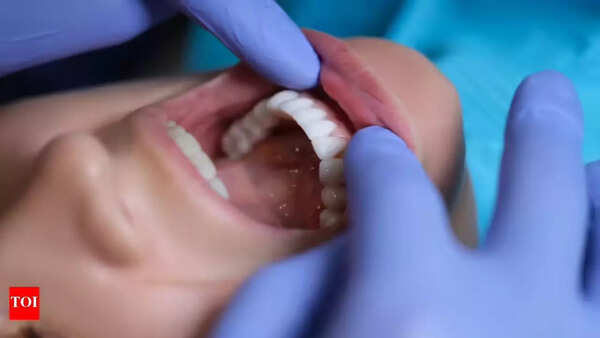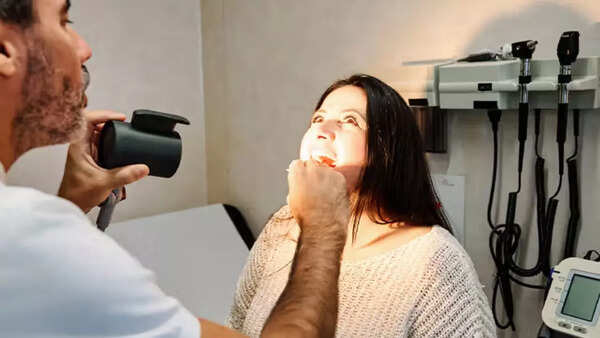Oral cancer, also known as mouth cancer, is a serious condition that develops in the tissues of the oral cavity. This includes the lips, tongue, gums, inner cheeks, and the roof or floor of the mouth. In some instances, it can also affect the oropharynx, the area at the back of the throat. Often beginning as a painless sore or patch, it may go unnoticed in its initial stages. Regular dental checkups and self-examinations are crucial for early diagnosis. While anyone can be affected, lifestyle factors like tobacco and alcohol use significantly elevate the risk. Early detection and prompt treatment are vital for improving outcomes and survival rates.
Oral cancer is a type of head and neck cancer that originates in the tissues of the oral cavity, including the lips, tongue, cheeks, gums, and the floor and roof of the mouth. Sometimes, it can extend to the oropharynx. It typically manifests as a persistent sore, patch, or lump that does not heal, often mistaken for a less severe issue in its early phases.
Untreated oral cancer can spread to nearby lymph nodes, other areas of the head and neck, and, in advanced cases, to distant organs. Despite its potential severity, it is highly treatable when detected early.
While oral cancer predominantly affects individuals aged 60 and older, it can also occur in younger people. Men are statistically twice as likely to develop it compared to women. Among racial groups, white men have a higher incidence rate than Black men. Approximately 11 out of 100,000 individuals receive an oral cancer diagnosis during their lifetime. The insidious nature of this cancer lies in its often painless and subtle early symptoms, which can lead to delayed diagnosis and treatment.

Oral cancer often presents as persistent changes in the mouth that do not resolve. These can include:
Visible Signs:
Sensory and Functional Symptoms:
These symptoms can mimic other conditions, such as infections or ulcers, but their persistence warrants concern.

Performing a monthly self-exam can aid in the early identification of unusual changes:
If you find anything unusual, seek immediate consultation with a healthcare professional.

Oral cancer can significantly impair a person's ability to speak, chew, swallow, and even breathe, depending on the tumor's location and extent. When it affects the oropharynx, it can lead to oropharyngeal cancer, impacting the base of the tongue, soft palate, tonsils, and the back of the throat.
The oral cavity, where oral cancer typically originates, includes:
Oral cancer begins in squamous cells, thin, flat cells lining the inside of the mouth. Mutations in these cells, often from prolonged exposure to carcinogens, cause them to multiply uncontrollably, forming tumors.
Major risk factors include:
Reports indicate that approximately 25% of oral cancer cases occur in individuals without any of the above risk factors, emphasizing the importance of regular oral screenings.
Diagnosis typically begins during routine dental or medical exams, with dentists often playing a crucial role in early detection.
Diagnostic methods include visual and physical exams, brush biopsies, incisional biopsies, laryngoscopy, and pharyngoscopy. Once a lesion is confirmed as cancerous, additional tests are performed to determine staging, which influences treatment options.
Oral cancer is staged using the TNM system:
Staging assists doctors in determining the most effective treatment and estimating the patient's prognosis.
While not all cases can be prevented, the risk can be significantly reduced through:
Life after oral cancer treatment varies. Some patients experience minor changes, while others face long-term impacts on speaking, chewing, and appearance. Support may be needed from reconstructive surgery, physical therapy, speech therapy, and mental health counseling. Ongoing check-ups are essential, as recurrence or secondary cancers are possible.
Newer articles
Older articles
 Vitamin D Could Slash Tooth Decay Risk by 50%, Study Suggests
Vitamin D Could Slash Tooth Decay Risk by 50%, Study Suggests
 Indian Cricket Star Mukesh Kumar and Wife Divya Singh Announce Birth of Son
Indian Cricket Star Mukesh Kumar and Wife Divya Singh Announce Birth of Son
 Shubman Gill's Captaincy Under Fire: Bold Calls Needed After England Test Defeat
Shubman Gill's Captaincy Under Fire: Bold Calls Needed After England Test Defeat
 Microsoft Aims for Foldable Redemption with Novel Hinge Design to Rival iPhone and Android
Microsoft Aims for Foldable Redemption with Novel Hinge Design to Rival iPhone and Android
 Popular Finance YouTuber's Account Hacked, Bitcoin Scam Promoted: Security Lessons Learned
Popular Finance YouTuber's Account Hacked, Bitcoin Scam Promoted: Security Lessons Learned
 Esha Gupta Breaks Silence on Hardik Pandya Romance Rumors: 'We Were Just Talking'
Esha Gupta Breaks Silence on Hardik Pandya Romance Rumors: 'We Were Just Talking'
 Hollywood's Love Affair with India: Iconic Film Locations Revealed
Hollywood's Love Affair with India: Iconic Film Locations Revealed
 Rishabh Pant Aims to Surpass Virat Kohli in Test Century Tally During England Series
Rishabh Pant Aims to Surpass Virat Kohli in Test Century Tally During England Series
 Prithvi Shaw Credits Sachin Tendulkar's Guidance for Career Revival After Setbacks
Prithvi Shaw Credits Sachin Tendulkar's Guidance for Career Revival After Setbacks
 Ashada Gupt Navratri 2025: Unveiling Dates, Timings, Significance & Secret Rituals
Ashada Gupt Navratri 2025: Unveiling Dates, Timings, Significance & Secret Rituals